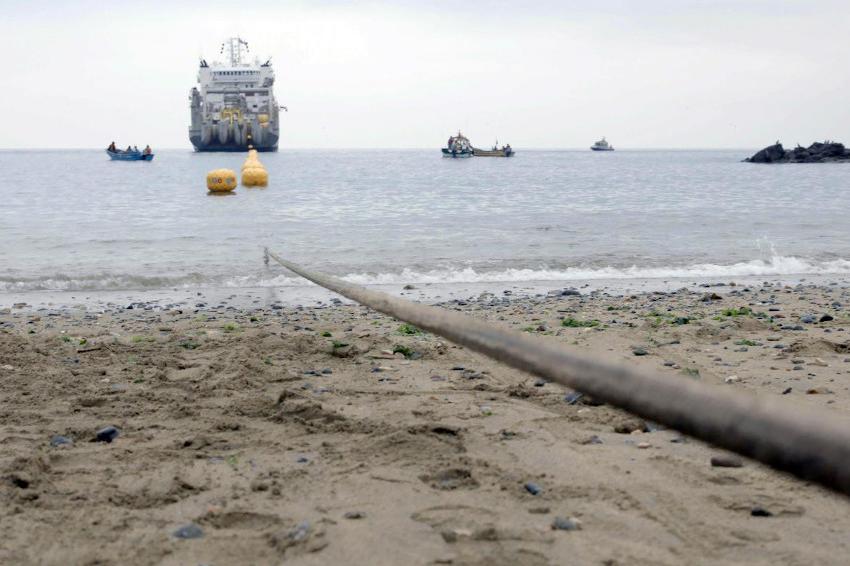Submarine optical cables for geophysical sensing
18.06.2021 - Technique provide early warning for tsunamis and earthquakes.
Italian and American researchers show that the fiber optic cables that carry data across the world's oceans can also be used to sense geophysical events and monitor ocean and seafloor conditions. Although buoys and cabled observatories can be used to monitor parts of the ocean, the information they provide is limited to their immediate surroundings. The new approach could offer a way to use the global network of subsea fiber optic cables to study otherwise inaccessible parts of the ocean.
“Once perfected, this new technique will allow geophysical sensing in the ocean depths, which are largely unexplored because of a lack of instrumentation that works in this environment,” said Zhongwen Zhan, assistant professor of geophysics at Caltech. “It could one day be used to detect earthquakes with epicenters in the ocean, allowing earlier warnings of earthquakes and tsunamis, for example.” Zhan demonstrates together with researchers from Google and the University of L'Aquila that the new approach can detect earthquakes and ocean swells. They did this using the Curie transoceanic fiber optic cable that connects Los Angeles with Valparaiso in Chile.
The new technique makes use of the fact that earthquakes, pressure variations or other changes in the environment of a transoceanic cable create subtle changes in the light traveling down the optical fibers. Although transoceanic fiber optic links have been used to sense geophysical events in the Mediterranean Ocean, the approach used in previous demonstrations required extremely specialized lasers that are difficult to obtain and use. “We used standard telecommunications equipment without any extra optical components other than those already present in commercial transceivers,” said Zhan. “In addition, there is no need for a dedicated light channel because the data required for sensing can be collected without disturbing the regular operation of the optical transmission system.”
Most transoceanic cables use sophisticated coherent light methods to encode data in both the amplitude and phase of the transmitted light. To analyze changes in the light traveling down the cable, the researchers developed a theoretical framework for using the polarization data generated by a coherent transmission system for sensing in the deep ocean. The method they developed measures tiny changes in polarization of the transmitted light. “Any changes in the environment of the cable will induce a tiny, but detectable difference in the light's polarization,” said Zhan. “We developed the theoretical framework required to interpret polarization data in submarine cables, which will enable further quantitative understanding of submarine geophysical processes.”
The researchers used their new approach to detect deep-sea earthquakes and ocean swells based on readings acquired from the Curie transoceanic fiber optic cable. The measurements agreed well with independent measurements made with seismometers on land. “The stability of the polarization in the Curie submarine system is so high that we were able to detect differential changes in the optical path length of two light polarizations of just 1.5 microns over the entire length of the cable,” said Zhan. “This equates to just a fraction of the wavelength for the laser light traveling down the cable.” The researchers are still working to better understand how to use the polarization data to detect various changes in the environment for an undersea optical cable. (Source: OSA)
Link: Dept. of Physical and Chemical Sciences, University of L’Aquila, L’Aquila, Italy • Seismological Laboratory, California Institute of Technology, Pasadena, USA • Curie cable, Global Network Infrastructure Strategy, Submarine, Google Inc., Mountain View, USA






